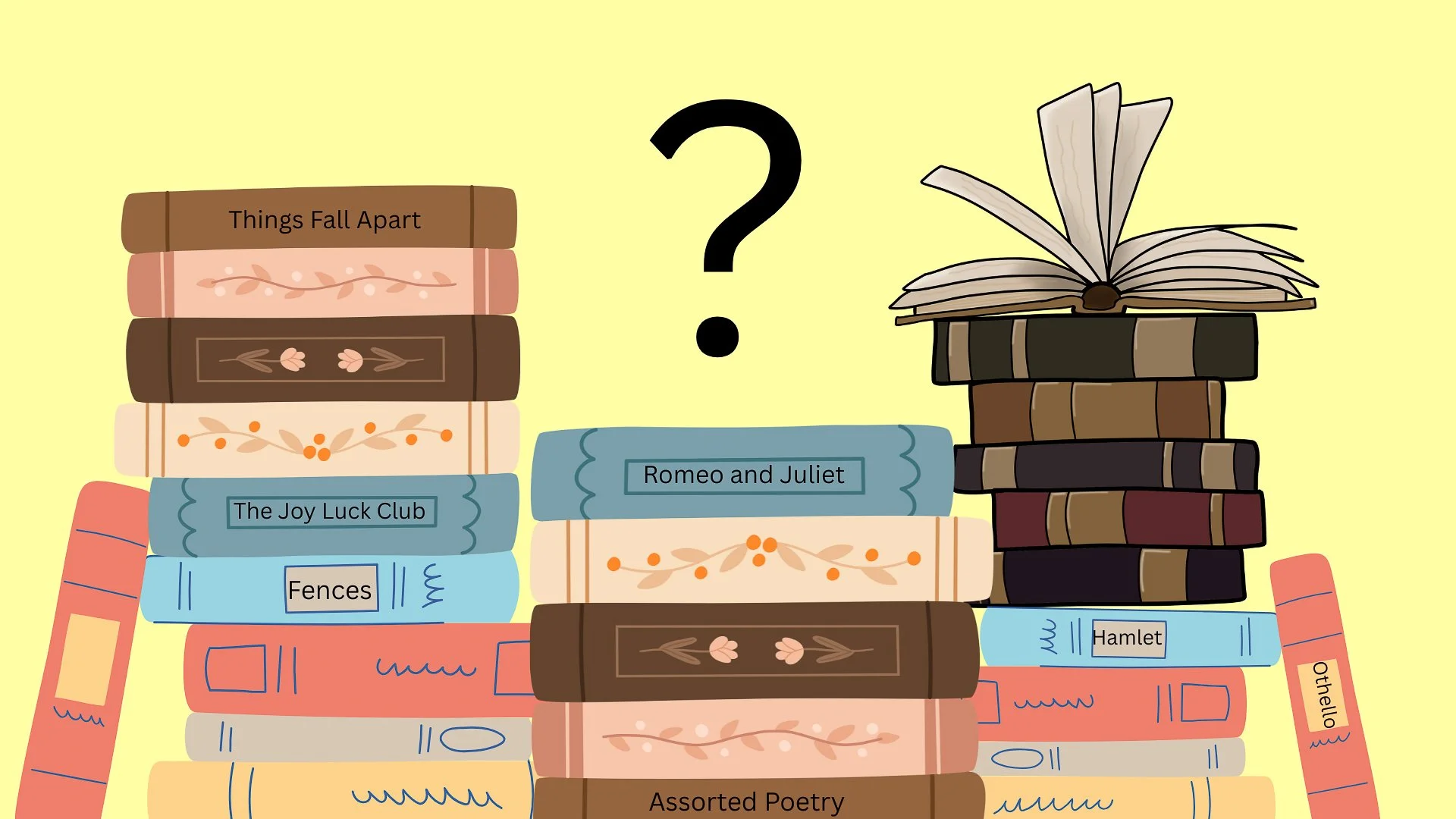To read or not to read: the goal of literature in English classes
A graphic of some literature covered in English classes (The Puma Prensa / Ryan Win-Ruan
By Ryan Win-Ruan, News Editor
It’s an experience that everyone goes through in school: English class. Obscure stories you have never heard of, texts so old they have a translation on the next page, and piles upon piles of poetry and one-pagers. But amidst the pages of these cornerstones of English classes, a universal question is ever present and constantly asked by students both bored and curious– why do we read them?
After a brief increase in the focus on nonfiction literature in the mid-2010s, fiction and poetry have recently begun taking back the center stage in English classrooms across the country, marking a shift away from traditionally taught literature into the diverse realm of contemporary literature.
According to the official Santa Rosa City Schools website, Maria Carrillo High School is required to teach specific “core works” to its students in order to meet certain standards and agreements set by both the school district and California’s Department of Education.
The curriculum for most English classes tends to focus largely on the cultural and social diversity of the chosen stories, and the school offers a wide range of books from across the world and multiple periods of history to study and assess.
In addition to the novels that are selected for the school’s curriculum, collections of poetry and short stories are also listed by MCHS that can supplement or replace certain units, as balancing “students’ interests and academic challenge” while maintaining “teacher independence and continuity of learning” is the main goal of the “core works” system.
Despite the myriad of books available for MCHS students, many wonder why they are so integral to the school’s English curriculum, and what lessons the books are trying to teach.
According to English teacher Jordan Henry, “[the] curriculum becomes more and more diverse every year, which is a good thing,” but she laments that nearly all of the older, classical novels have to be swapped out for more contemporary novels. To her, a balance of diversity and the classics is ideal, though she admits that students often won’t be as engaged with Shakespeare as they will with a more recent novel, which is part of the reason why the Ethnic Studies courses were created in the first place.
English and Ethnic Studies teacher Maddie Doyle corroborates Henry’s belief that diversity is key. Additionally, she expressed that the themes of social justice and overcoming oppression are the most prevalent in the works that she covers as a teacher for her Ethnic Studies courses at MCHS. She emphasizes the importance of understanding them, and supports the teaching of these topics throughout her Ethnic Studies classes.
To Doyle, the creation of Ethnic Studies as a course marked a very important change in the goals of California’s English Language courses, as before then, she “didn’t have access to teach any texts by non-white authors at the sophomore level, and at the junior level, there were very few options.” Now, the majority of stories taught in Ethnic Studies classes are from non-European authors, which she sees as a step towards a more diverse educational background.
However, the system is not completely flawless. Doyle says that “it would be nice if [the district could] add contemporary voices sooner to their publishing…a lot of stuff has been written recently and is being written right now that would work so well for [the English] classes.” She sites financial issues as the main roadblock, but she is overall satisfied with the literature in the school’s curriculum thus far.
But despite a few hiccups, both Doyle and Henry feel that the English curriculum has improved greatly in the past few years, and Doyle in particular states that teaching these “stories that highlight the value of grit and determination gives students an exposure to history and humanity that they wouldn’t necessarily know otherwise.”

